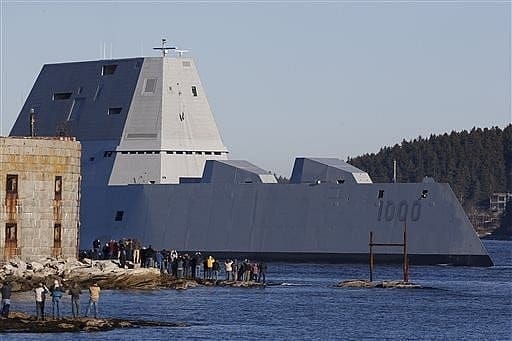New Zumwalt destroyer heads to sea for trials

BATH, Maine (AP) — The largest destroyer ever built for the U.S. Navy headed out to sea for the first time Monday, departing from shipbuilder Bath Iron Works and carefully navigating the winding Kennebec River before reaching the open Atlantic, where the ship will undergo sea trials.
More than 200 shipbuilders, sailors and residents gathered to watch as the futuristic 600-foot, 15,000-ton USS Zumwalt glided past Fort Popham, accompanied by tugboats. The ship looks like something out of a James Bond movie and boasts some high-technology features such as a stealthy design meant to make the vessel less visible to surface radar.

